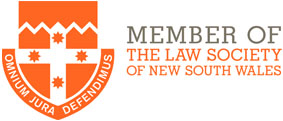On your death, your superannuation balance will not necessarily be dealt with in accordance with your wishes as stated in your Will. Read that again… slowly, then read on.
Unless you have a valid beneficiary death benefit nomination in place that directs your superannuation fund’s trustee as to who to pay your super balance to, your trustee may have a discretion as to who to pay it to.
The trustees of most retail super funds have a discretion as to who to pay a benefit to. Usually, the fund rules specify the member’s dependents as the class of beneficiaries to be considered first, with the trustee to determine the amounts/proportions but imagine what happens if you are perhaps separated (but not divorced) and you are living with another person (as a de facto) – a dispute could easily arise. What if you have children? What would/should the split be?
To minimise disputes and avoid applications to the Superannuation Complaints Tribunal or the Supreme Court, make a nomination. There are generally 2 types: Non-binding and Binding
NON-BINDING NOMINATIONS
A non-binding nomination is an indication to your trustee of your preferences but it is, as it states – non-binding so the trustee can ignore it. This can be a good idea if there are significant changes in circumstances before your death where you haven’t got around to updating your nomination. The trustee’s discretion could prevent it going to your ex spouse or avoid the situation of you accidentally omitting one of your kids from a benefit.
BINDING NOMINATIONS
A binding nomination is exactly that – binding (provided that it is valid as at the date of death). There are 2 sub-categories of binding nomination: lapsing and non-lapsing.
- LAPSING – Many funds provide for the lapsing type – and unfortunately these need to be renewed every 3 years or the nominations lapse.
- NON-LAPSING – Most Self-Managed Super Funds (SMSFs) and some retails funds allow in their deeds for nominations that never lapse (unless you update it). Older SMSF Deeds and their Rules do not allow for the non-lapsing type and may need to be updated.
There are requirements for making any nomination legally valid, witnesses etc.
Speak to us about your estate planning and ensure your wishes are properly documented.
FURTHER INFORMATION
If you would like any further information in relation to Wills, estate planning, superannuation death benefit nominations or updating SMSF deeds , please contact us on (02) 9521 2455 or email help@mckilloplegal.com.au












